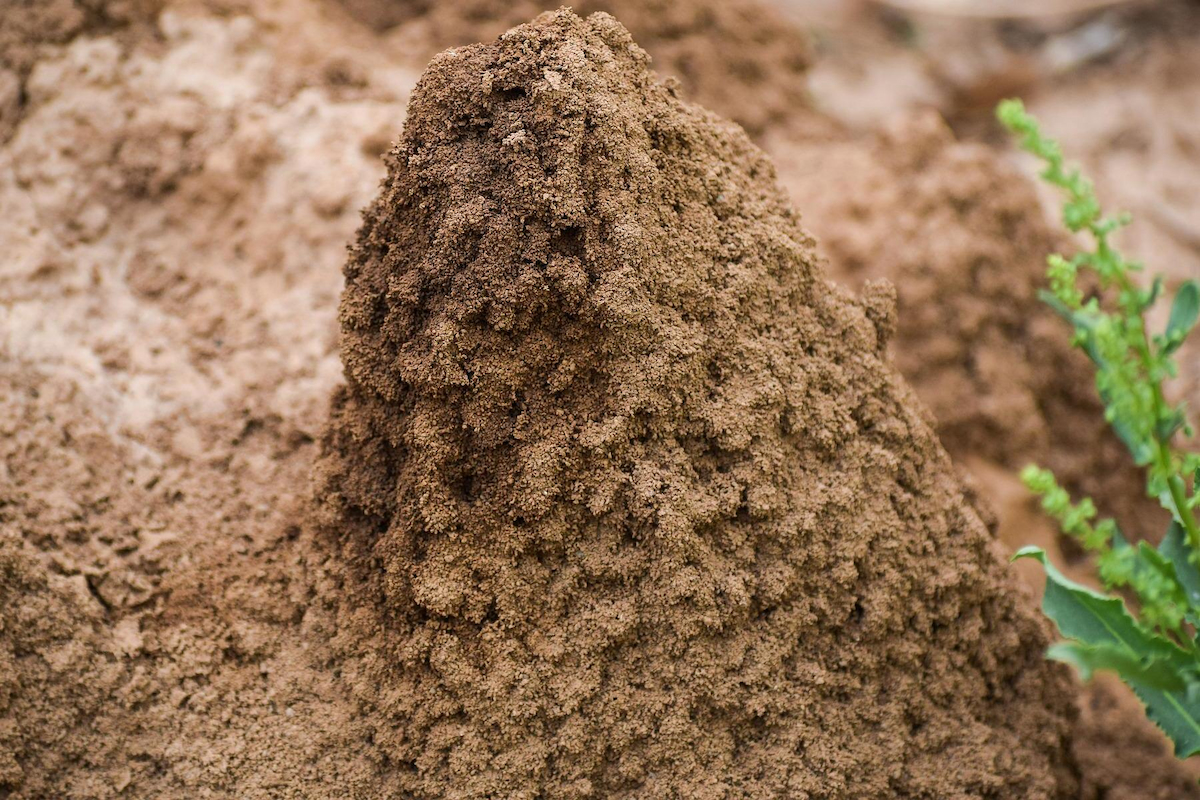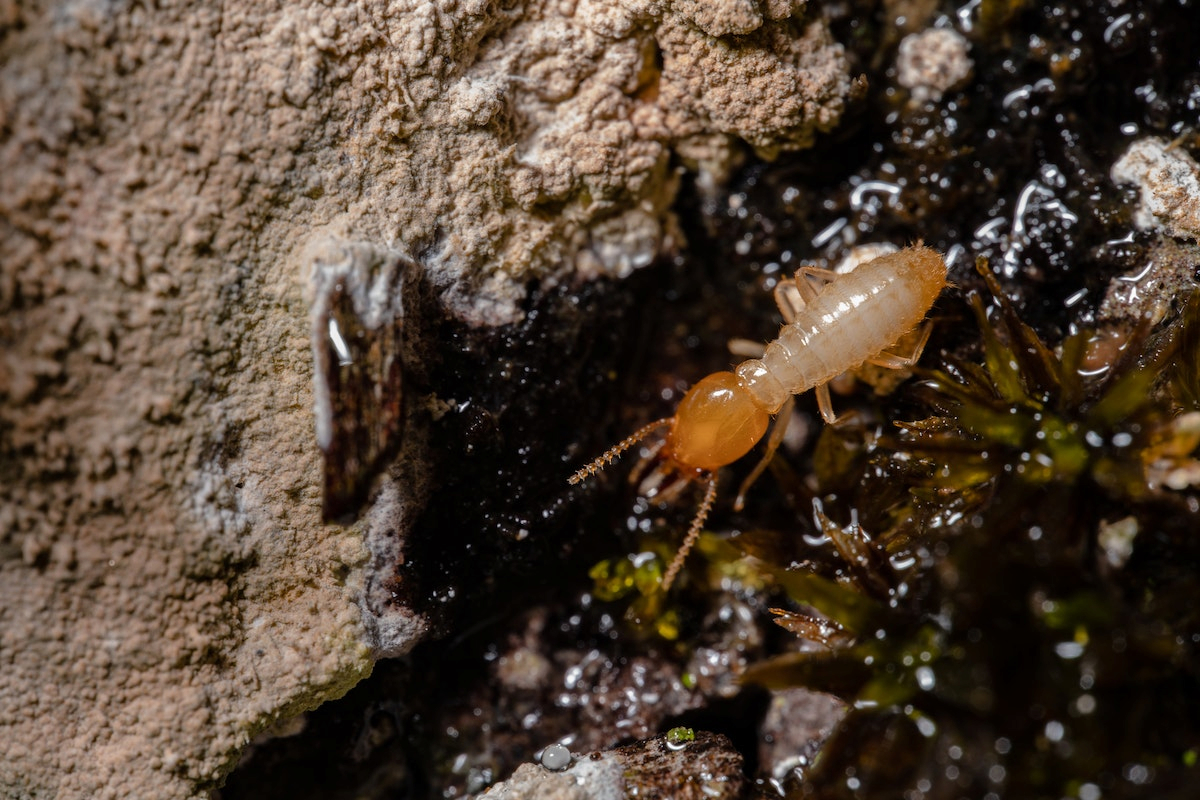Where Do Termites Lay Eggs?
Termites are secretive with their reproduction, and you likely won’t see their eggs until you eliminate the existing colony.
Termites lay and keep their eggs inside their nests. Subterranean termites build these nests deep below the ground, while drywood termites set them up inside structures like wood and walls. Because they’re so deep within the nests, termite eggs are almost impossible to find.
Still, they aren’t a cause for worry if you encounter them post-extermination. Termite eggs cannot survive independently, and you can dispose of them without worrying about after-effects.
Where Do Termite Eggs Come From?

The queen is the source of most termite eggs.
She and the king are alates of a previous colony and leave to start their own. They mate and, at first, produce only a few eggs.
As the colony increases, so does the queen’s egg-laying capacity, producing over a thousand eggs per day in optimal conditions.
Once laid, worker termites transport the eggs to incubation chambers, where they watch over them until they hatch. This process takes about two weeks.
After hatching, the worker termites take the baby termites to a nursery area and provide them with growth necessities like food and moisture.
Warmer climates benefit the queen, with the reproduction rate increasing exponentially. Reproduction isn’t as fast in colder areas and, in most cases, halts during winter.
The queen can maintain egg production at the highest level for up to 10 years, after which her capacity decreases.
As most colonies have secondary reproductives that assist in laying eggs at that stage, an aging queen isn’t an issue. However, a queen can live up to 25 years in a resourceful, established colony.
What Do Termite Eggs Look Like?
Though almost impossible to find for the average homeowner, termite eggs have defining characteristics that make them easy to point out.
Termite eggs are the same across the board, so you can’t tell a species by its eggs.
Shape
Termite eggs come in clusters. They’re cylindrical and look like jelly beans.
They’re also translucent.
A cluster may contain hundreds of eggs. It looks like a spoonful of caviar in pictures across the web, but the naked eye perceives it as a pile of white powder.
Termite eggs are clear and have no dips or indentations.
Size
When the queen lays eggs, they’re 0.01 inches (0.25 mm) in size, smaller than a grain of rice. They expand as the embryo develops, reaching about 0.04 inches or 1 mm.
A single termite egg is almost impossible to perceive with the naked eye. You have a better chance of making out the eggs when they’re in a cluster and a sticky substance binds them together, keeping them inside the nest.
The number of eggs per cluster depends on the termite species. Larger termites produce clusters with hundreds of eggs, while smaller termites produce clusters with thousands.
Color
Termite eggs are white, but yellow ones are also common. Yellow eggs are the queen’s first batch, and the color fades the more they develop.
Termite eggs are also translucent, making the white look more like an off-white.
The nests contain bright orange or brown circular structures. These are termite balls – fungi that mimic termite eggs to steal their food.
Termite balls are sometimes close to the eggs’ off-white color, the shape being the only differentiating factor, and they’re also yellow in some cases.
Where Do Termites Keep Their Eggs?

Termite eggs are deep inside the nest.
Subterranean termites keep theirs four to eighteen inches below the ground, while drywood termites store theirs deep inside wood, walls, roof materials, and dead tree limbs.
The queen and workers are the primary caretakers of new eggs, but the king also helps out.
The worker termites take the eggs to the incubation chamber and leave the queen with the duty of producing more eggs.
The king plays his part by routinely mating with her, ensuring production doesn’t cease unless it needs to (like during the winter).
The only time you’ll see termite eggs is after extensive extermination.
Most of the colony is dead by then, and the eggs don’t have caretakers to keep them concealed.
How Do Termite Eggs Develop?
Termite eggs develop into one of three castes: workers, soldiers, or reproductives (alates).
The fate of each egg depends on the evolutionary needs of the colony.
The events during hatching and molting are characteristic of all termites, while mating is specific to alates or swarming termites.
Before Hatching
Termite eggs increase in size before hatching. The increase is due to the embryo’s development, with the final structure growing about 30% larger.
Climate is a determining factor in how fast an egg hatches. Termite eggs hatch in approximately 26 days in hot and wet climates, with the timeframe extending to about 30 days in cool and dry areas.
Hatching
Termite larvae maintain the same size when hatched. Worker termites take them to the nursery and take care of them until they’re old enough to join the colony.
With time, termite larvae develop into nymphs. At this stage, each termite develops into a respective caste, either a worker, soldier, or reproductive.
Molting
As they grow, termites become too big for their exoskeleton.
Termites have a soft layer underneath the hard covering. When the latter peels off, the former comes to the forefront and hardens to become the new exoskeleton.
It takes up to three molts for a nymph to develop into its determined caste, and molting is essential for a termite’s development.
Specific extermination methods like bait poisons take advantage of this biological process, killing termites by hindering their growth.
Mating
Alates or swarming termites don’t stay with their colony members until death; they’re the independent children who move out and start their own lives.
Reproductive termites seek mates to go forth and start a new colony.
Of the three castes, they’re the only ones with wings. They’re also darker in color and have more rigid outer coverings, allowing them to persevere in harsh weather conditions as they fly to their new nests.
A flight of sexually mature termites is a nuptial flight and is also characteristic of ants and bees.
What is the Lifespan of a Termite?

Queens live the longest, most surpassing a couple of decades.
Workers and soldiers have lifespans of about two years, the shortest of all castes. Their day-to-day life is full of duties, burning more energy and dying sooner than the rest.
Alates that leave to start a new colony have a long lifespan if their mission is successful.
However, most don’t make it and die from predator attacks or severe weather.
More established colonies have secondary reproductives that aid in laying eggs. They also have long life spans but don’t match the queen.
Conclusion
Termite eggs are the beginning of an impressive life cycle. Unfortunately for us, they also signify an infestation.
Termites aren’t familiar with boundaries. They’re more than happy to make your house their new home if it has the necessary survival conditions.
You also can’t see their eggs and will find out about the infestation when the insects are all grown and tearing up your wood.
To prevent this situation, set up annual inspections and implement measures like barrier treatments and proper wood storage.
